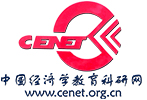No. C2012007 2012年10月12日
内容提要:我们将企业家通过主观努力提高企业盈利能力的行为定义为“创新”,企业家的努力程度无法被外界观察。根据创新的外部影响,创新行为可分为“良性创新”和“恶性创新”,前者利人利己,后者损人利己。在一个市场经济中,私人所有制为两种创新均提供较强的激励,公有制则相反,但是较强的激励未必能增进社会福利,取决于哪种创新占主导地位。本文以医疗服务市场为例,将两种不同创新放在一个统一的模型中讨论,指出自由市场的效率与行业特点有关系,一般来说存在一个最优的混合所有权结构。
关键词: 所有制 激励 效率 道德风险
Abstract:Entrepreneurs exert unobservable efforts on innovations that enhance the profitability of their firms. The innovations can be “virtuous” or “vicious”. In our model, virtuous innovation leads to lower marginal cost of production, while vicious innovation induces excess consumer demands. The incentive to innovate depends on the ownership structure of the firms. Private ownership provides strong incentive, while public ownership provides weak incentive, for both types of innovations. This paper uses health care industry as an example and shows that the social optimal ownership structure depends on the industrial characteristics. Generally there is an optimal mixed-ownership structure.
Key Words: Ownership; Incentive; Efficiency; Moral Hazard
JEL Classification: D6, P1


